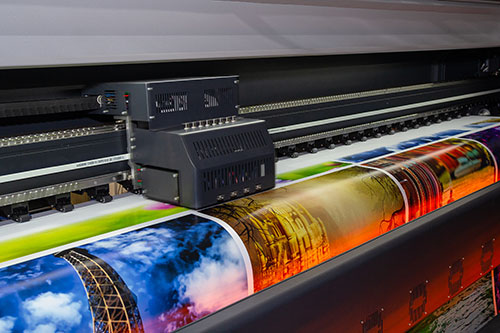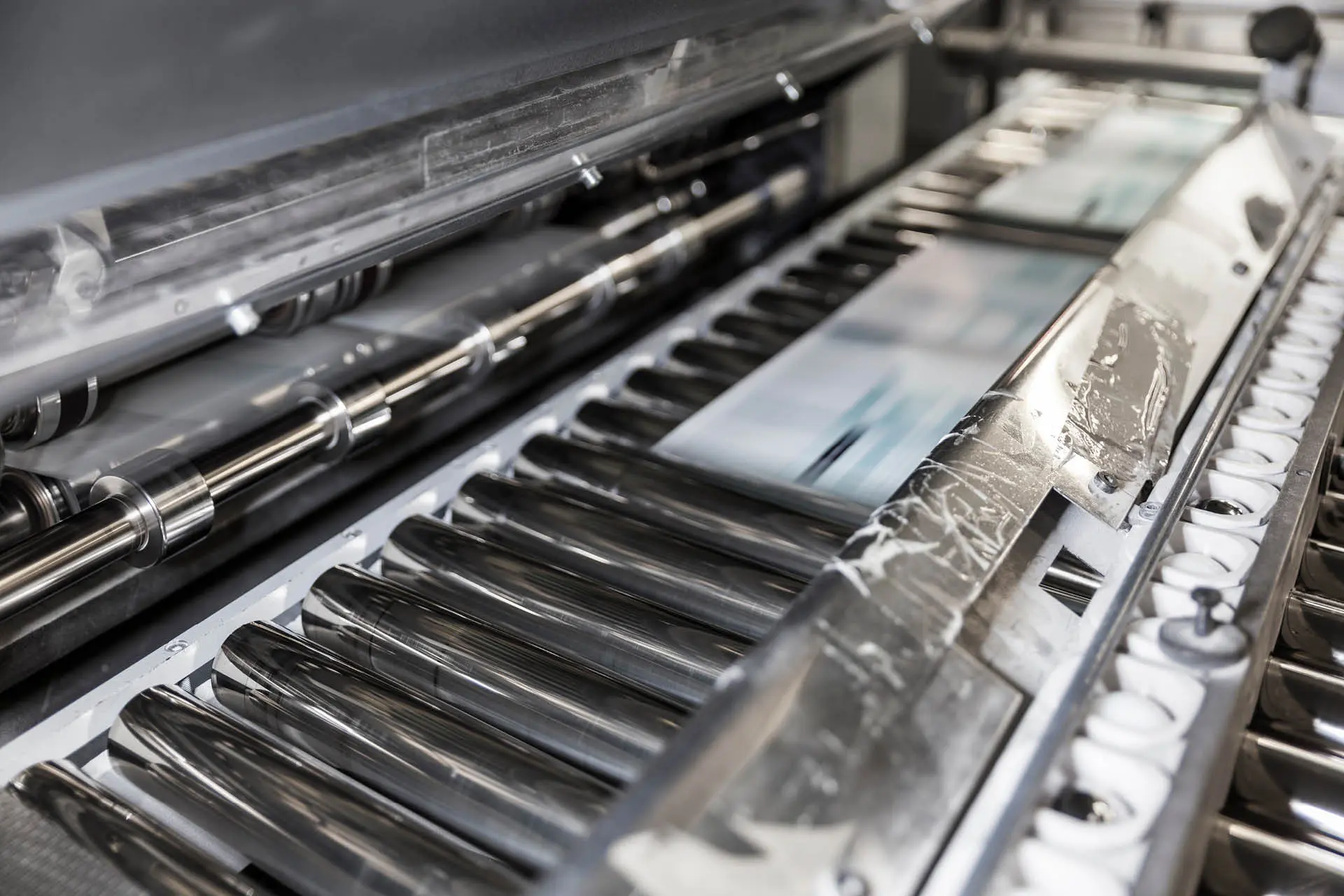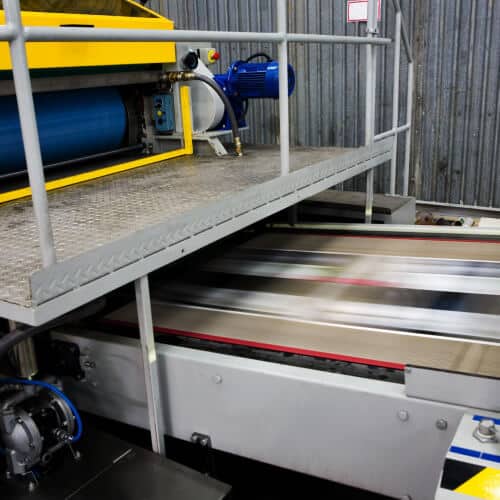The Important Overview to Understanding Litho Printing and Its Applications
Litho printing stands as a considerable technique in the printing industry, rooted in the principles of oil and water repulsion. This method not just delivers premium images however additionally deals with various business demands. Its applications range from advertising materials to product packaging, showcasing its versatility. As the industry adapts to brand-new modern technologies, the evolution of litho printing questions about its future and relevance in an electronic landscape. What lies in advance for this sustaining technique?

What Is Litho Printing?
Litho printing, a widely utilized printing technique, relies upon the concept of oil and water repulsion. This method employs a flat printing surface area, normally a steel plate, which is dealt with to ensure that the picture locations are receptive to oil-based inks while the non-image locations repel them. The process begins with the production of an image on the plate, typically via drawing or photo ways. When the image is prepared, home plate is dampened with water, followed by the application of ink. The ink sticks just to the photo areas, permitting exact reproduction of graphics and message. Litho printing is favored for its capability to produce high-quality prints with fine information and vibrant colors. It is typically utilized in commercial applications, consisting of papers, publications, and product packaging, showcasing its convenience and effectiveness in satisfying the demands of contemporary printing.
The Background of Lithography
Although lithography is a modern-day printing staple, its origins map back to the late 18th century when German dramatist Alois Senefelder developed the strategy in 1796. Initially developed as a method for replicating messages and pictures, lithography made use of a level stone surface area to create prints via a chemical procedure. Senefelder's technology allowed for higher versatility and creative expression compared to previous printing methods.By the 19th century, lithography got prevalent approval, becoming a preferred choice among musicians and authors. It allowed the mass manufacturing of illustrations, maps, and posters, significantly impacting the printing industry. The method further progressed with the introduction of lithographic presses, enhancing effectiveness and quality.As the commercial transformation advanced, lithography adjusted to satisfy the demands of industrial printing, leading the way for contemporary applications. Today, it remains a vital technique in different industries, including posting, packaging, and art recreation.
Just How Litho Printing Functions
An essential function of litho printing is its reliance on the principle of oil and water repulsion - litho printing. In this procedure, photos are moved from a level surface, commonly a steel or polymer plate, to paper. The plate is dealt with to ensure that the locations intended for printing attract ink, while the non-image areas repel it due to their affinity for water. The printing starts by dampening home plate with water, which follows the non-image locations. Consequently, an oil-based ink is applied, sticking just to the desired photo areas.When home plate enters contact with the substrate, the ink is transferred, developing a print. The litho printing procedure is qualified of generating high-grade photos with fine information. It is often used for automation because of its effectiveness and uniformity, making it a recommended approach for business printing applications
Benefits of Litho Printing
One notable advantage of litho printing is its ability to generate high-grade pictures regularly, making it a suitable choice for business jobs. This printing technique uses a flat printing plate, making certain even ink distribution and sharp details. Litho printing is additionally renowned for its color precision, enabling lively and true-to-life reproductions, which is important for branding materials.Moreover, it sustains a wide range of substrates, consisting of paper, cardboard, and also specific plastics, enhancing its convenience. The procedure is cost-effective for big runs, as economic climates of range minimize per-unit prices. Additionally, litho printing has a fast turnaround time, enabling reliable manufacturing schedules.Its longevity additionally suggests that published materials stand up to fading, making sure that the end product keeps its aesthetic charm with time. Overall, these advantages make litho printing a recommended selection across various industries, adding to its long-lasting appeal.
Applications of Litho Printing in Business
As companies increasingly look for dependable and top notch printing options, litho printing becomes a principal in numerous applications. This method is particularly favored for generating advertising and marketing materials such as brochures, flyers, and brochures, many thanks to its capability to deliver vivid colors and sharp pictures. In addition, litho printing is frequently employed for product packaging solutions, permitting firms to create distinctive labels and boxes that improve item appeal.In the sector of corporate identification, litho printing is important in producing expert stationery, calling card, and promotional product, which aid reinforce brand name acknowledgment. It is commonly utilized in the publishing market for published materials such as publications and magazines, where constant high quality is extremely important. On the whole, litho printing's adaptability and performance make it an important tool for organizations intending to interact effectively and establish a solid market existence.
Artistic Use Litho Printing
Litho printing works as a flexible tool in the domain of printmaking, offering musicians a special technique to reveal their creative thinking. This strategy permits a large range of imaginative his comment is here applications, from typical prints to modern interpretations. By exploring the subtleties of litho printing, artists can harness its distinct top qualities to improve their job.

Printmaking Strategies Review
The artistry of printmaking incorporates a varied range of strategies, with litho printing attracting attention for its one-of-a-kind strategy to picture production. This method relies on the principle of oil and water repulsion, enabling artists to attract straight onto a limestone or metal plate with an oily medium. Once prepared, home plate is moistened and inked, transferring the photo onto paper via stress. Litho printing is commemorated visit site for its ability to generate fine details and rich tonal variations, making it a favored selection amongst musicians. Additionally, the procedure is versatile, fitting both typical strategies and contemporary adaptations. This flexibility allows litho printing to bridge numerous imaginative designs, improving the printmaking landscape with its distinctive qualities and abilities.
Unique Artistic Applications
Exploring the distinct creative applications of litho printing discloses its remarkable flexibility in various innovative fields. Artists make use of litho printing to create elaborate styles and textures, enabling for meaningful and in-depth works. The procedure assists in the recreation of dazzling colors, making it ideal for illustrations and art prints. Many modern musicians embrace lithography for its capacity to incorporate typical techniques with contemporary ideas, causing ingenious art work. Furthermore, litho printing is usually employed in the manufacturing of limited edition prints, boosting their value and appeal. The responsive top quality of litho prints adds a distinctive measurement, bring in collection agencies and art fanatics alike. Generally, litho printing stays a considerable medium for imaginative expression, bridging timeless approaches with modern creative thinking.
The Future of Litho Printing in a Digital Globe
As the printing industry evolves, litho printing faces the challenge of incorporating digital technologies to continue to be relevant. Techniques concentrated on electronic combination, along with patterns in sustainability and technology, will form its future - litho printing. Understanding these characteristics is crucial for market stakeholders seeking to adapt to a quickly changing landscape
Digital Combination Methods
A growing number of litho printing firms are embracing digital combination techniques to remain affordable in a significantly electronic landscape. By including electronic operations, these firms can enhance procedures and improve effectiveness. This integration enables for real-time data administration and enhanced communication in between divisions, reducing turn-around times substantially. Additionally, electronic tools enable far better personalization and customization of published materials, accommodating particular customer needs. Companies are additionally embracing hybrid printing options that incorporate standard litho techniques with electronic innovations, supplying convenience in manufacturing. In addition, leveraging information analytics assists in recognizing market fads and consumer choices, permitting businesses to make enlightened decisions. Overall, electronic assimilation is coming to be important for litho printing companies aiming to innovate and respond to evolving market requirements.
Sustainability and Advancement Trends

Often Asked Inquiries
What Products Are Frequently Utilized in Litho Printing?
The products typically used in litho printing include light weight aluminum plates, ink, water, and paper. Each component plays a vital duty in the printing procedure, making sure top quality image reproduction and effective transfer of ink onto the substratum.
Just How Does Litho Printing Contrast to Digital Printing?
Litho printing offers remarkable shade uniformity and quality for huge runs, while electronic printing masters short runs and personalization. Each approach has unique benefits, accommodating various demands based on production scale and cost-efficiency.
What Is the Normal Turnaround Time for Litho Printing Projects?
The common turnaround time for litho printing tasks varies, normally varying from a few days to numerous weeks. Elements affecting this timeframe include job complexity, amount, and called for completing processes, impacting general manufacturing routines.
Can Litho Printing Accommodate Custom Sizes and Formats?
Litho printing can certainly fit personalized sizes and styles, enabling adaptability in design. This flexibility makes it possible for clients to accomplish distinct print end results customized to their details needs, boosting the overall efficiency of their projects.
What Are the Ecological Influences of Litho Printing?
The environmental effects of litho printing include resource intake, chemical use, and waste generation. Innovations in lasting practices and green products are gradually minimizing these adverse results, advertising an extra eco liable method to printing.